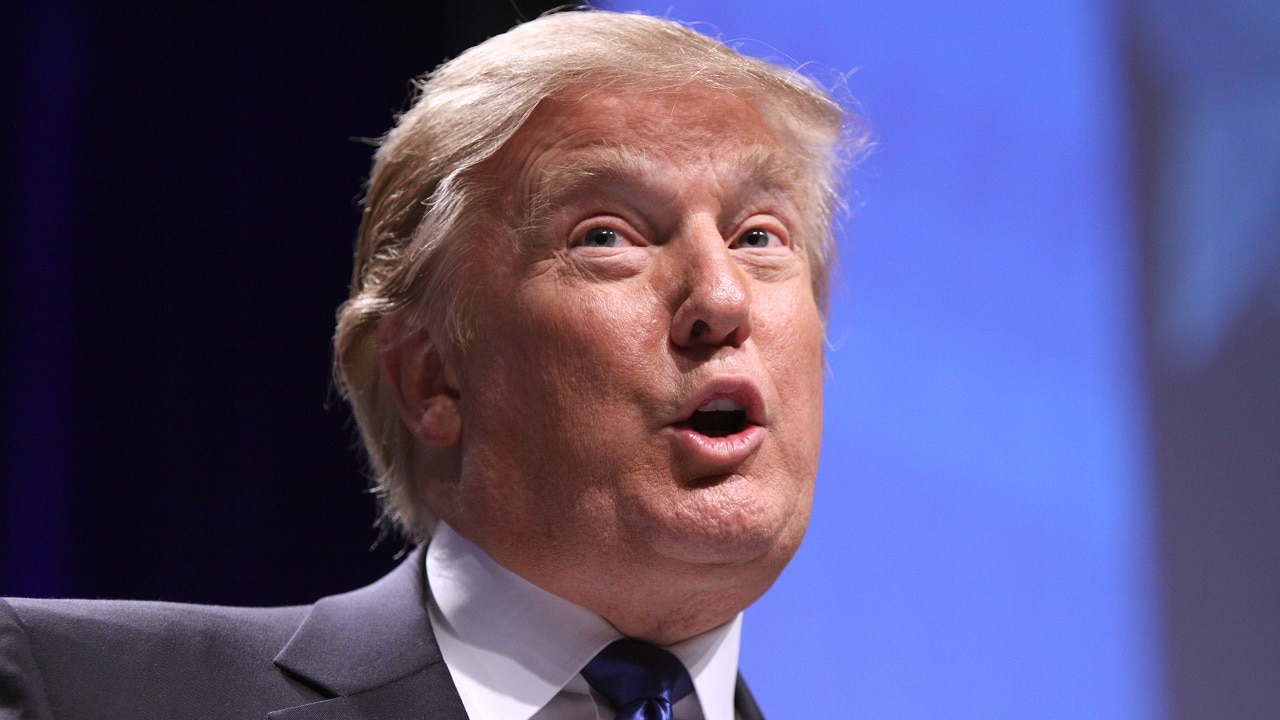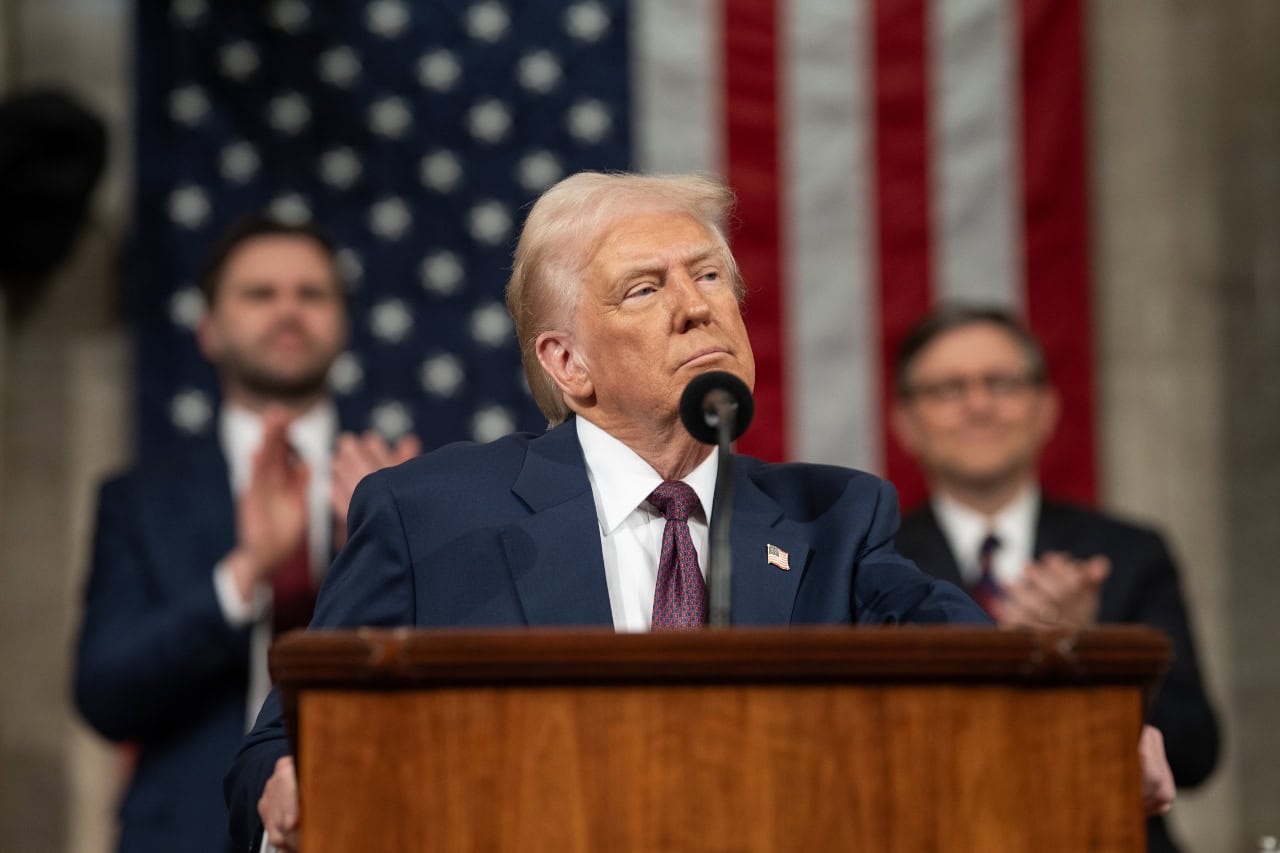Aside from the COVID-caused contraction in the spring of 2020 that lasted a mere two months, Donald Trump managed to avoid a recession during his first four years in office. He may not be so lucky in his second term.
That’s the signal being sent this week by economists, who fear that a downturn is on the way.
Bloomberg News reported on Wednesday that Wall Street is pointing to an increasing risk of a recession, although it is not a certainty. One model from JPMorgan Chase & Co. showed that “the market-implied probability of an economic downturn” has reached 31 percent, up from 17 percent last November.
Another model, from Goldman Sachs Group Inc, sees the risk of a recession at 23 percent, up from 14 percent just in January.
And the Wall Street Journal this week reported that the “recession trade is back” on Wall Street. While the Street was optimistic, heading into the year, about “market-friendly tax cuts and regulatory rollbacks” from the new administration, it hasn’t turned out that way so far. The Nasdaq has fallen 7.5 percent just since the middle of February.
And it isn’t just Wall Street- betting markets see the possibility of a recession as well.
Per Axios, Polymarket now sees a 38 percent probability of a recession in 2025, a number that was below 25 percent for most of the first two months of the year.
Axios also said that while markets only predicted a 1 percent chance of the Federal Reserve cutting rates at least four times this year — the kind of thing that often happens in recessions — the probability has now reached 30 percent.
Donald Trump and His Tariffs Might Mean Recession
Yes, part of the problem is the uncertainty created by Trump’s approach to tariffs, in which trade restrictions are announced and then pulled back, sometimes partially and sometimes not, with other countries retaliating.
Many days in the last two weeks, the stock market has risen or fallen by hundreds of points based on the latest Trump tariff move.
But there are other bad economic indicators as well. Consumer confidence is at a four-year low, per Bloomberg, while US factory activity is “edging closer to stagnation.”
As for inflation, that big problem that some say Trump was elected to solve? It remains stubbornly high.
The Inflation Problem
According to a report put out last week by the Federal Reserve Bank of St. Louis, prices remain 10 percent above their pre-pandemic trend. While inflation peaked in mid-2022 and has been falling since, “progress towards the Federal Reserve’s 2% target may have stalled recently.”
Also, the continuing inflation remains broad-based rather than concentrated on specific products and sectors.
They’ve Been Wrong Before on Recession Talk
Then again, recession fears don’t always come true.
Look at the 2022-2023 period when, according to a report by The Capital Group, a survey of 85 percent of economists predicted in December of 2022 that a recession would happen in 2023.
This was based, in part, on the inverted yield curve — defined as “when rates for two-year Treasury bonds surpassed those for 10-year bonds”- which happened in mid-2022.
Not only that, but Google searches for the word “recession” reached their highest mark in history.
How was that recession avoided? Per the Capital Group’s analysis, the Fed managed to “tamp down inflation with rapid interest rate hikes while avoiding a recession” to create a “soft landing.”
The year 2023 did see a series of bank failures, accompanied at the time by occasional fears of a resulting financial crisis, but no such crisis materialized.

Donald Trump speaking at CPAC 2011 in Washington, D.C.
What Will Trump Do?
Should such a recession come to pass, Trump will likely blame it on his predecessor and likely refer to it as the “Biden Recession.”
But Trump is president now, and if the economy enters a downturn, it will be on him and his administration to deal with it.
About the Author: Stephen Silver
Stephen Silver is an award-winning journalist, essayist and film critic, and contributor to the Philadelphia Inquirer, the Jewish Telegraphic Agency, Broad Street Review and Splice Today. The co-founder of the Philadelphia Film Critics Circle, Stephen lives in suburban Philadelphia with his wife and two sons. For over a decade, Stephen has authored thousands of articles that focus on politics, technology, and the economy. Follow him on X (formerly Twitter) at @StephenSilver, and subscribe to his Substack newsletter.

